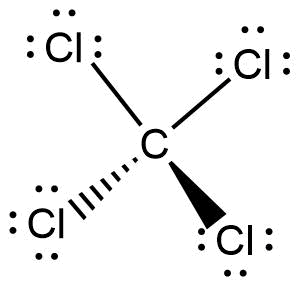
Explain hybridization of central atoms in
Answer
509.7k+ views
Hint: There are mainly three types of orbital hybridization in chemistry:
Complete answer:
Carbon tetrachloride is a liquid organic compound that has a molecular formula
The state of hybridization of an atom in a particular molecule can be obtained by determining the steric number (SN) of that atom.
The steric number is the summation of the number of lone pairs of electrons present on the atom and the number of atoms that are directly attached to that. Mathematically, it can be represented as:
SN = (lone pairs of electrons on the atom) + (number of atoms directly bonded to the atom)
Now, the steric number is related to the state of hybridization is as follows:
If the steric number is 2, then the hybridization is sp.
If the steric number is 3, then the hybridization is
If the steric number is 4, then the hybridization is
Now, the steric number can be evaluated from the Lewis structure of a molecule.
The Lewis structure of

From the above structure, it can be concluded that,
Lone pairs on carbon atom is 0
Number of atoms that are bonded to carbon atom is 4
Hence, the steric number will be:
SN = (0+4) = 4
Since, the steric number of carbon atoms is found to be four, then we can say that the state of hybridization of carbon atoms is
Hence, the hybridization of the central atom in
Note: The shape and geometry of a molecule depends upon the hybridization state of the central atom of a molecule. If the central atom is Sp3 hybridized, then both the geometry and the shape of the molecule will be tetrahedral.
Complete answer:
Carbon tetrachloride is a liquid organic compound that has a molecular formula
The state of hybridization of an atom in a particular molecule can be obtained by determining the steric number (SN) of that atom.
The steric number is the summation of the number of lone pairs of electrons present on the atom and the number of atoms that are directly attached to that. Mathematically, it can be represented as:
SN = (lone pairs of electrons on the atom) + (number of atoms directly bonded to the atom)
Now, the steric number is related to the state of hybridization is as follows:
If the steric number is 2, then the hybridization is sp.
If the steric number is 3, then the hybridization is
If the steric number is 4, then the hybridization is
Now, the steric number can be evaluated from the Lewis structure of a molecule.
The Lewis structure of

From the above structure, it can be concluded that,
Lone pairs on carbon atom is 0
Number of atoms that are bonded to carbon atom is 4
Hence, the steric number will be:
SN = (0+4) = 4
Since, the steric number of carbon atoms is found to be four, then we can say that the state of hybridization of carbon atoms is
Hence, the hybridization of the central atom in
Note: The shape and geometry of a molecule depends upon the hybridization state of the central atom of a molecule. If the central atom is Sp3 hybridized, then both the geometry and the shape of the molecule will be tetrahedral.
Recently Updated Pages
Master Class 11 Economics: Engaging Questions & Answers for Success

Master Class 11 Business Studies: Engaging Questions & Answers for Success

Master Class 11 Accountancy: Engaging Questions & Answers for Success

Master Class 11 English: Engaging Questions & Answers for Success

Master Class 11 Computer Science: Engaging Questions & Answers for Success

Master Class 11 Maths: Engaging Questions & Answers for Success

Trending doubts
State and prove Bernoullis theorem class 11 physics CBSE

1 ton equals to A 100 kg B 1000 kg C 10 kg D 10000 class 11 physics CBSE

State the laws of reflection of light

One Metric ton is equal to kg A 10000 B 1000 C 100 class 11 physics CBSE

Difference Between Prokaryotic Cells and Eukaryotic Cells

1 Quintal is equal to a 110 kg b 10 kg c 100kg d 1000 class 11 physics CBSE




